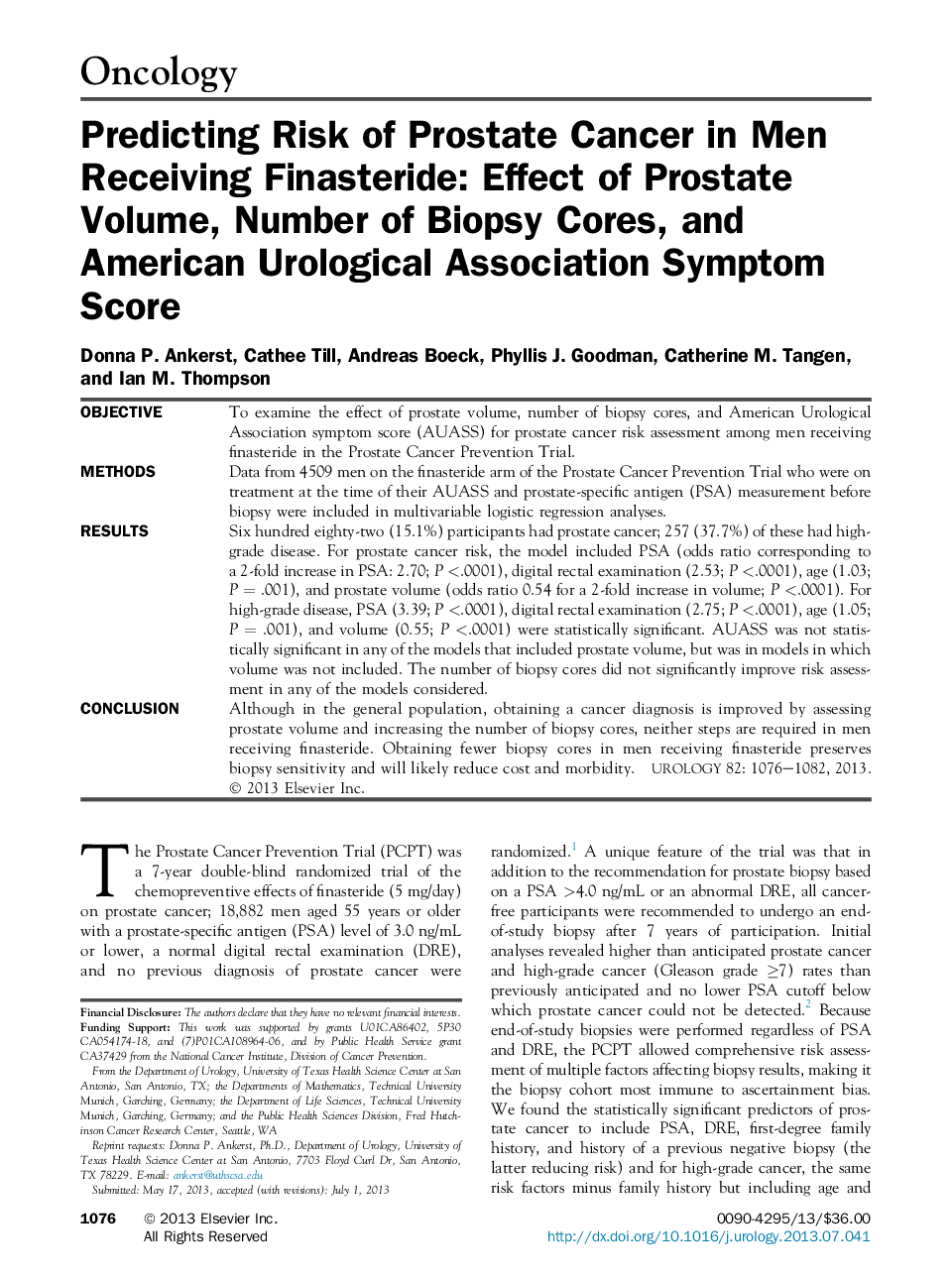| Article ID | Journal | Published Year | Pages | File Type |
|---|---|---|---|---|
| 3899230 | Urology | 2013 | 7 Pages |
ObjectiveTo examine the effect of prostate volume, number of biopsy cores, and American Urological Association symptom score (AUASS) for prostate cancer risk assessment among men receiving finasteride in the Prostate Cancer Prevention Trial.MethodsData from 4509 men on the finasteride arm of the Prostate Cancer Prevention Trial who were on treatment at the time of their AUASS and prostate-specific antigen (PSA) measurement before biopsy were included in multivariable logistic regression analyses.ResultsSix hundred eighty-two (15.1%) participants had prostate cancer; 257 (37.7%) of these had high-grade disease. For prostate cancer risk, the model included PSA (odds ratio corresponding to a 2-fold increase in PSA: 2.70; P <.0001), digital rectal examination (2.53; P <.0001), age (1.03; P = .001), and prostate volume (odds ratio 0.54 for a 2-fold increase in volume; P <.0001). For high-grade disease, PSA (3.39; P <.0001), digital rectal examination (2.75; P <.0001), age (1.05; P = .001), and volume (0.55; P <.0001) were statistically significant. AUASS was not statistically significant in any of the models that included prostate volume, but was in models in which volume was not included. The number of biopsy cores did not significantly improve risk assessment in any of the models considered.ConclusionAlthough in the general population, obtaining a cancer diagnosis is improved by assessing prostate volume and increasing the number of biopsy cores, neither steps are required in men receiving finasteride. Obtaining fewer biopsy cores in men receiving finasteride preserves biopsy sensitivity and will likely reduce cost and morbidity.
